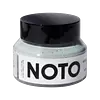What's inside
What's inside
 Key Ingredients
Key Ingredients

 Benefits
Benefits

 Concerns
Concerns

 Ingredients Side-by-side
Ingredients Side-by-side

Water
Skin ConditioningCetyl Alcohol
EmollientParaffinum Liquidum
EmollientGlycerin
HumectantHyaluronic Acid
HumectantGlyceryl Stearate
EmollientPEG-100 Stearate
Stearic Acid
CleansingPolyacrylamide
C13-14 Isoparaffin
EmollientLaureth-7
EmulsifyingCarbomer
Emulsion StabilisingBenzyl Alcohol
PerfumingBenzoic Acid
MaskingParfum
MaskingSodium Hydroxide
BufferingPhenoxyethanol
PreservativeWater
Skin ConditioningCocos Nucifera Oil
MaskingVitis Vinifera Seed Oil
EmollientHyaluronic Acid
HumectantTanacetum Annuum Flower Oil
MaskingSclerocarya Birrea Seed Oil
HumectantSalvia Sclarea Oil
MaskingPelargonium Graveolens Flower Oil
MaskingDaucus Carota Sativa Seed Oil
EmollientAlcohol
AntimicrobialAphanizomenon Flos-Aquae Extract
HumectantCetyl Alcohol
EmollientStearyl Alcohol
EmollientPolysorbate 60
EmulsifyingStearic Acid
CleansingGlycerin
HumectantXanthan Gum
EmulsifyingPhenoxyethanol
PreservativeTetrasodium Glutamate Diacetate
Water, Cocos Nucifera Oil, Vitis Vinifera Seed Oil, Hyaluronic Acid, Tanacetum Annuum Flower Oil, Sclerocarya Birrea Seed Oil, Salvia Sclarea Oil, Pelargonium Graveolens Flower Oil, Daucus Carota Sativa Seed Oil, Alcohol, Aphanizomenon Flos-Aquae Extract, Cetyl Alcohol, Stearyl Alcohol, Polysorbate 60, Stearic Acid, Glycerin, Xanthan Gum, Phenoxyethanol, Tetrasodium Glutamate Diacetate
Ingredients Explained
These ingredients are found in both products.
Ingredients higher up in an ingredient list are typically present in a larger amount.
Cetyl Alcohol is a fatty alcohol. Fatty Alcohols are most often used as an emollient or to thicken a product.
Its main roles are:
Though it has "alcohol" in the name, it is not related to denatured alcohol or ethyl alcohol.
The FDA allows products labeled "alcohol-free" to have fatty alcohols.
Learn more about Cetyl AlcoholGlycerin is already naturally found in your skin. It helps moisturize and protect your skin.
A study from 2016 found glycerin to be more effective as a humectant than AHAs and hyaluronic acid.
As a humectant, it helps the skin stay hydrated by pulling moisture to your skin. The low molecular weight of glycerin allows it to pull moisture into the deeper layers of your skin.
Hydrated skin improves your skin barrier; Your skin barrier helps protect against irritants and bacteria.
Glycerin has also been found to have antimicrobial and antiviral properties. Due to these properties, glycerin is often used in wound and burn treatments.
In cosmetics, glycerin is usually derived from plants such as soybean or palm. However, it can also be sourced from animals, such as tallow or animal fat.
This ingredient is organic, colorless, odorless, and non-toxic.
Glycerin is the name for this ingredient in American English. British English uses Glycerol/Glycerine.
Learn more about GlycerinHyaluronic acid is naturally found in healthy skin. It is a humectant, meaning it draws moisture to your skin.
This ingredient helps hydrate, soothe, and protect the skin.
What makes hyaluronic acid so hydrating? It has the capacity to bind or hold large amounts of water.
Fun fact: It is already naturally found in our bodies, such as the fluids of our eyes and our joints.
Studies find this ingredient to have anti-inflammatory and anti-microbial properties. This can help speed up wound-healing.
Hyaluronic acid can be irritating if the molecule has a low-molecular weight, or if the molecules are small.
One study found low-molecular weight hyaluronic acid to be pro-inflammatory, meaning some people may experience irritation. This is because our bodies use hyaluronic acid in the wound-healing process to signal to our bodies, via irritation, that something needs healing.
The same study found high-molecular weight hyaluronic acid to be anti-inflammatory.
These are some other common types of Hyaluronic Acid:
Learn more about Hyaluronic AcidPhenoxyethanol is a preservative that has germicide, antimicrobial, and aromatic properties. Studies show that phenoxyethanol can prevent microbial growth. By itself, it has a scent that is similar to that of a rose.
It's often used in formulations along with Caprylyl Glycol to preserve the shelf life of products.
Stearic Acid is a fatty acid. It is an emollient, emulsifier, and texture enhancer.
As an emollient, stearic acid helps soften skin. It aids the skin's protective barrier by preventing water loss. It also provides a gentle cleansing effect without stripping away natural oils.
Stearic acid may also be used to enhance the texture of products. It can add volume and stabilize ingredients such as water and oil. This can help water and oil ingredients from separating.
Sources of stearic acid include animal or vegetable fats/oils such as coconut or shea. It can be naturally found in butter, cocoa butter, shea butter, vegetable fats, and animal tallow.
This ingredient may not be Malassezia folliculitis, or fungal-acne safe.
Learn more about Stearic AcidWater. It's the most common cosmetic ingredient of all. You'll usually see it at the top of ingredient lists, meaning that it makes up the largest part of the product.
So why is it so popular? Water most often acts as a solvent - this means that it helps dissolve other ingredients into the formulation.
You'll also recognize water as that liquid we all need to stay alive. If you see this, drink a glass of water. Stay hydrated!
Learn more about Water